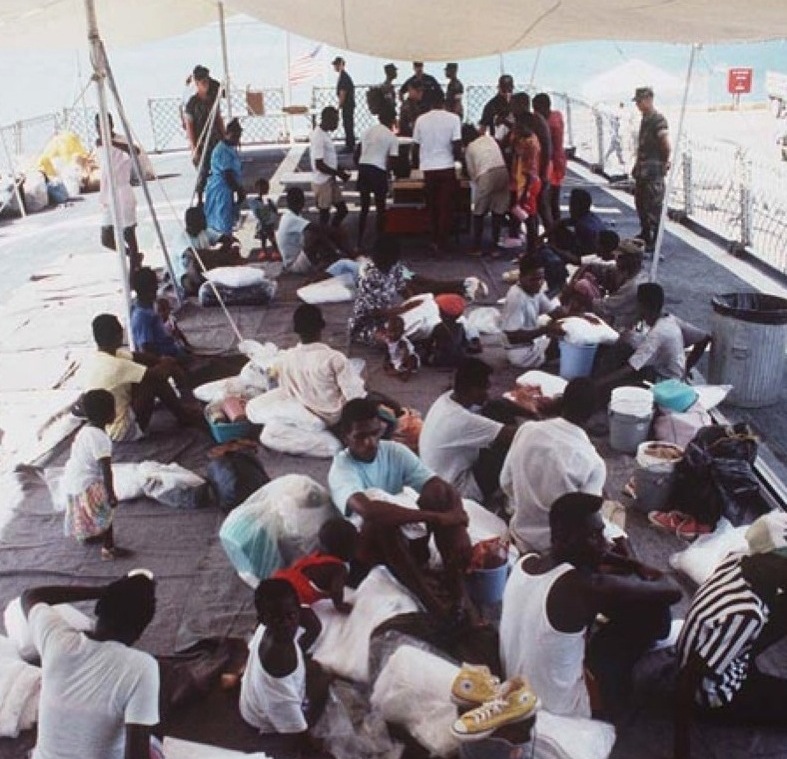 |
| John Moore/Getty Images |
After just a handful of Haitian migrants successfully landed on the shores of Florida, President George H.W. Bush issued the “Kennebunkport Order” (Executive Order 12807) on May 24, 1992, to affirm the sovereignty of America and protect our people against harmful effects of such migration. The order directed the Coast Guard to seek out and interdict any Haitian boats and promptly return them to Haiti or another country of origin, irrespective of their claims, in light of the fact that most were coming for economic reasons. Fast-forward 26 years to a Central American migration built on the same asylum fraud, with hundreds of thousands more people and more harmful effects on our border and interior. Isn’t it time for a similar strategy?
President Clinton called the policy “cruel” and “illegal” during his campaign and promised to treat the Haitian boat migrants like refugees and process them. Then, after Clinton won the election, his promise spawned a new wave that looked like it would bring in as many as 125,000 migrants. Clinton recognized the real-world consequences of his words, and on January 15, just five days before his inauguration, Clinton announced that he would continue Bush’s policy of a closed door and warned migrants that “leaving by boat is not the route to freedom.”
It’s important to remember that there was a bipartisan notion, built on 200 years of history, that immigration should never burden Americans in any way. That is why, even before Bush’s order, most of the Haitians were taken to Guantanamo Bay, off our soil, so that the pending adjudication would not place the American people on the hook for their fiscal burden, potential diseases, crime, social problems, and children born in the U.S. When the facility at Guantanamo became full is when the Bush administration began the policy of completely ignoring their claims and sending them straight back home.
While the liberal groups did challenge the order in lower courts, the courts declined to place an injunction on the policy as they do today. The Second Circuit eventually sided with the migrant groups on the merits, but the Supreme Court, in Sale v. Haitian Centers Council, Inc. (1993), categorically reversed it 8-1. The high court noted that the president’s delegated authority under 212(f) and 215(a) of the Immigration and Nationality Act (INA) override any asylum considerations and that the president had full authority to exclude anyone from our shores. This case was cited by Chief Justice Roberts in the travel ban case of Trump v. Hawaii last year. This should be the end of the story as it applies to today’s problem.Read the rest from Daniel Horowitz HERE.
If you like what you see, please "Like" us on Facebook either here or here. Please follow us on Twitter here.


No comments:
Post a Comment